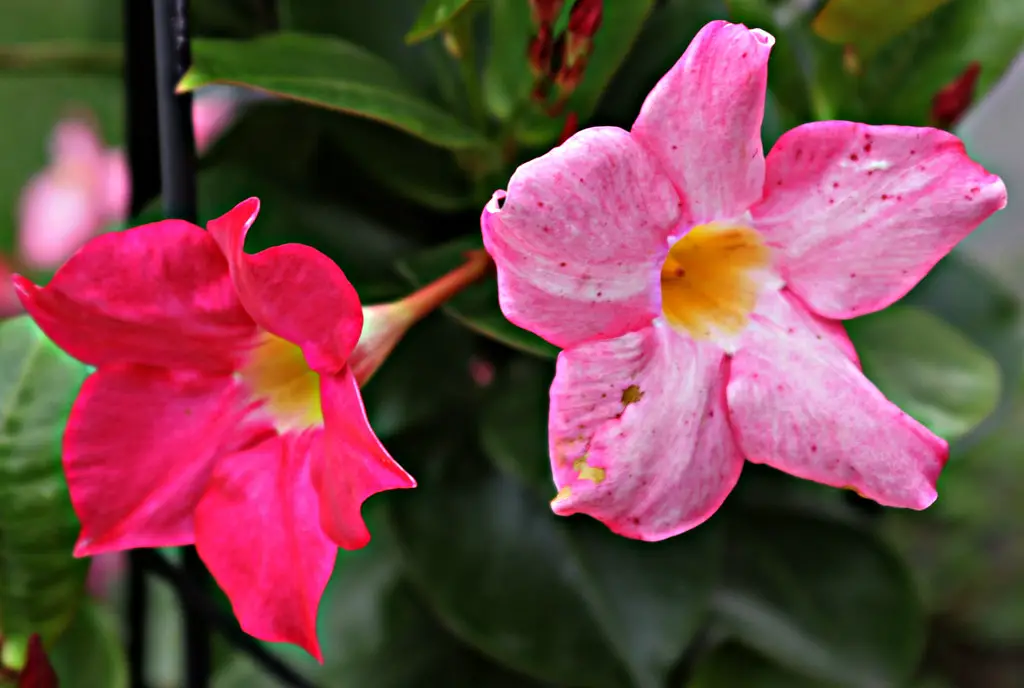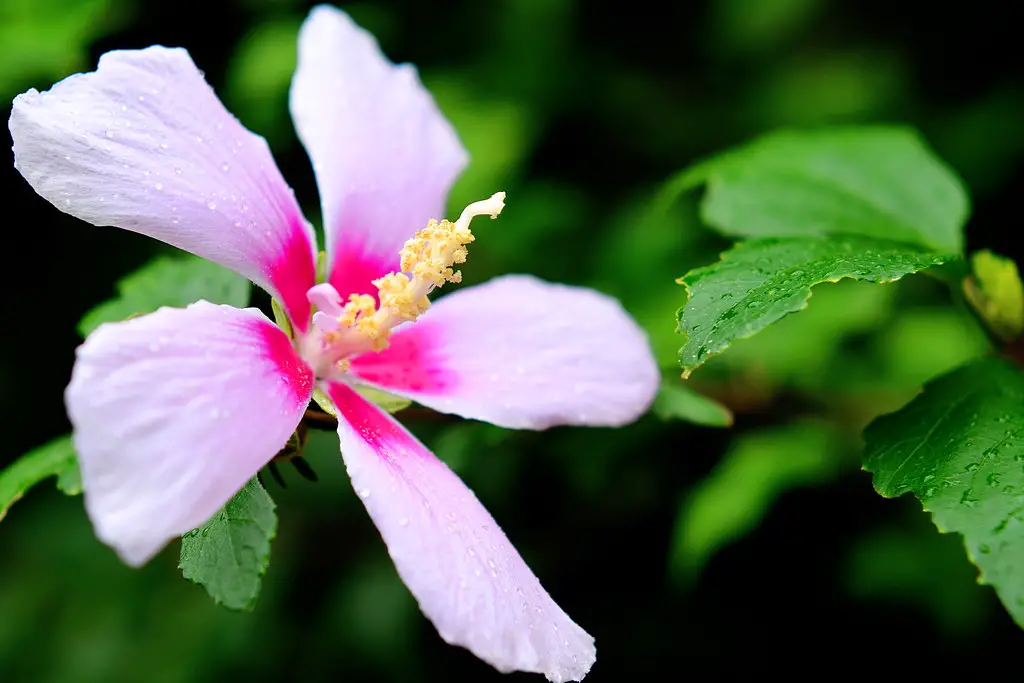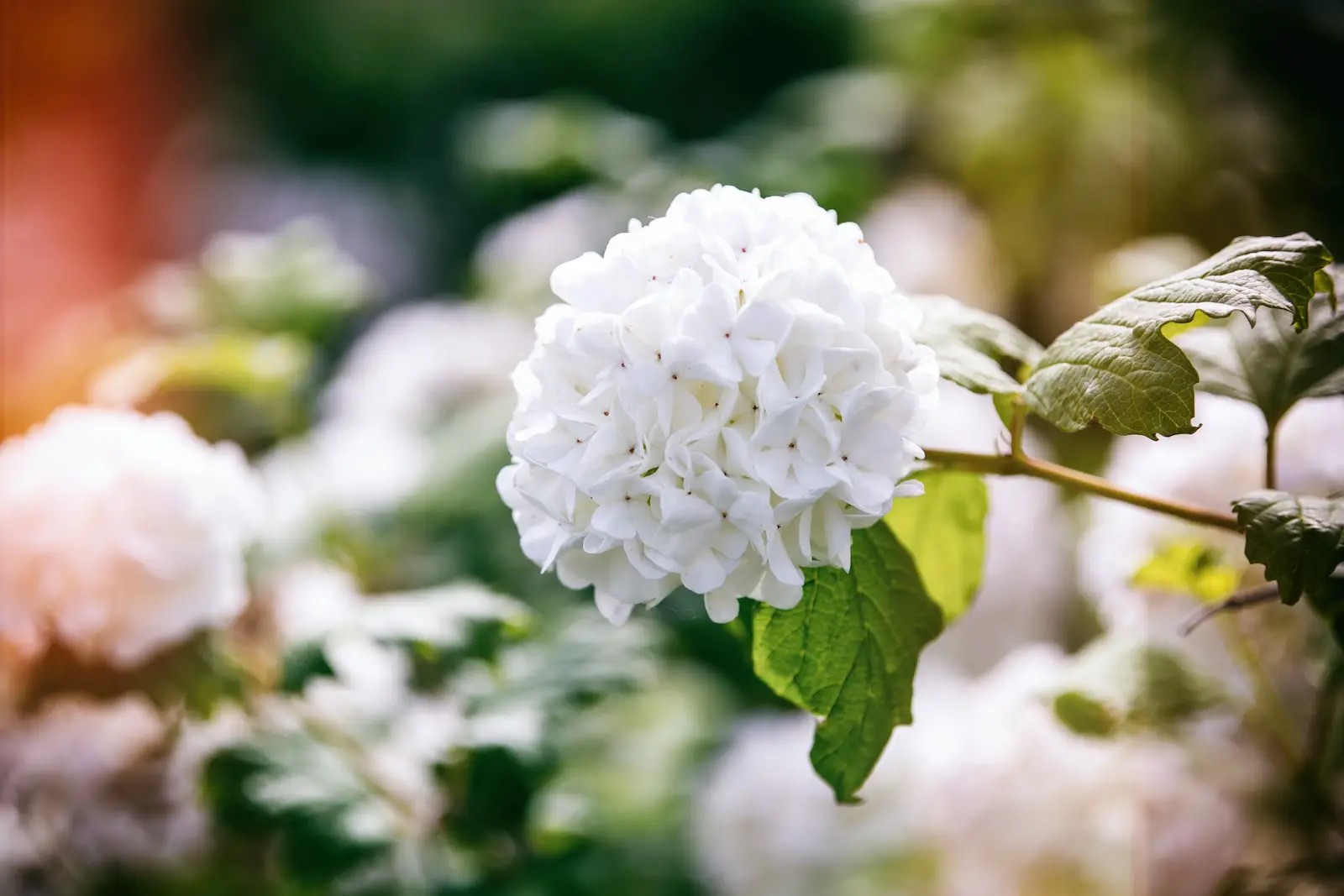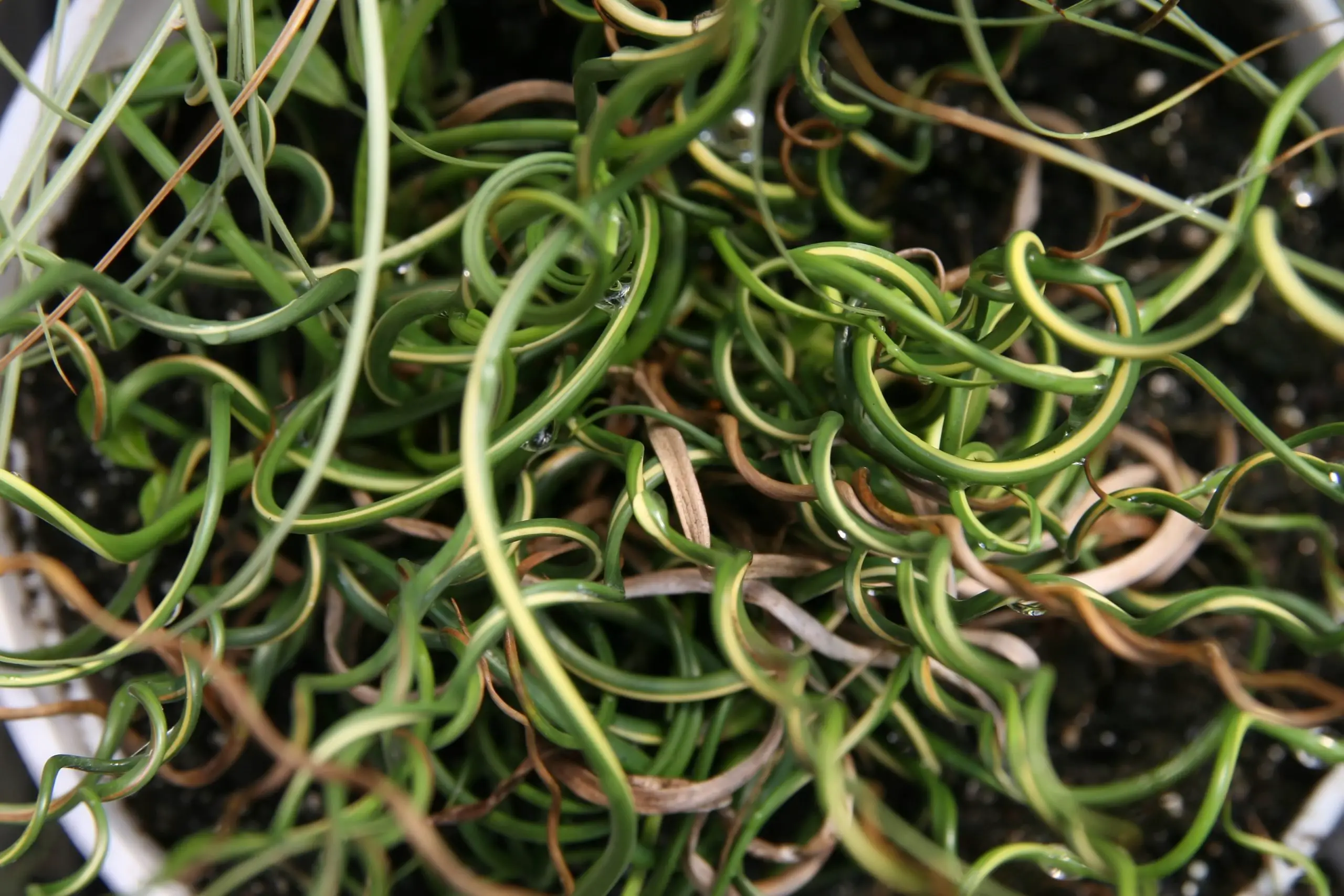Mandevilla, also known as Brazilian Jasmine or Rocktrumpet, is a stunning tropical vine that flourishes with vibrant trumpet-shaped flowers. Originating from South America, it’s a popular choice for gardens and patios across warmer climates, or as a houseplant in cooler regions. The dazzling flowers, typically in shades of pink, white, or red, make it a favored addition for decorative purposes.
In nature, Mandevilla is known to climb trees and other tall structures, which allows gardeners to use it creatively in landscape designs. While it’s a tropical plant that thrives in warm temperatures, with proper care and attention, Mandevilla can be cultivated in various settings. Its versatility, combined with the beauty it lends to spaces, contributes to its popularity among plant enthusiasts.
However, growing a Mandevilla isn’t always straightforward. It demands specific care regarding light, soil, water, and temperature. Whether grown indoors or out, understanding these requirements is essential for the plant’s health and will ensure that it continues to bloom and thrive.
| Attribute | Details |
|---|---|
| Common Names | Mandevilla, Brazilian Jasmine, Rocktrumpet |
| Botanical Name | Mandevilla spp. |
| Family | Apocynaceae |
| Plant Type | Tropical Vine |
| Mature Size | Up to 15 feet |
| Sun Exposure | Full sun to partial shade |
| Soil Type | Well-drained, loamy |
| Hardiness Zones | 9-11 |
| Native Area | South America |
Mandevilla Care
Caring for Mandevilla requires an understanding of its tropical origin. Providing the right amount of sunlight, maintaining an appropriate temperature, and ensuring proper water and soil conditions are vital. Regular pruning and feeding are also necessary to keep the plant healthy and encourage blooming.
Mandevilla’s love for warmth should always be considered, especially if you live in a region with cold winters. If grown outdoors in such an area, it should be treated as an annual or brought inside during the colder months to thrive.
Light Requirement for Mandevilla
Mandevilla thrives in full sun to partial shade. While it can tolerate some shade, too little light will reduce blooming and can cause leggy growth. However, harsh direct sunlight might scorch the leaves, so some protection might be needed in intense heat.
Soil Requirements for Mandevilla
A well-draining, loamy soil rich in organic matter is ideal for Mandevilla. It is sensitive to waterlogging, so good drainage is essential. A mixture of sand, peat, and regular potting soil often works well.
Water Requirements for Mandevilla
Mandevilla prefers moist but not soggy soil. It’s crucial to let the top of the soil dry slightly between waterings to prevent root rot. In winter, if the plant is indoors, the watering should be reduced.
Temperature and Humidity
This tropical vine loves warmth and should be kept in temperatures above 50°F. It also enjoys high humidity, so misting or a humidity tray may be needed, especially if grown indoors.
Fertilizer
Feeding Mandevilla with a balanced fertilizer every two to four weeks during the growing season can support growth and flowering. A slow-release, water-soluble fertilizer is often recommended.
Pruning Mandevilla
Pruning in late winter or early spring helps to shape the plant and encourage bushy growth. Removing dead or diseased parts also maintains the plant’s health.
Propagating Mandevilla
Mandevilla can be propagated through stem cuttings. Taking cuttings in spring and rooting them in a mixture of sand and peat can yield new plants.
How To Grow Mandevilla From Seed
Growing Mandevilla from seed is a lengthy process. Fresh seeds should be planted in warm, moist soil and need consistent care to germinate and grow.
Common Pests & Plant Diseases
Aphids
Aphids can be controlled with insecticidal soap or neem oil.
Powdery Mildew
Prevent and treat with proper air circulation and fungicides.
Common Problems With Mandevilla
Yellowing Leaves
This might indicate overwatering or a nutritional deficiency.
Failure to Bloom
Often due to insufficient light or improper feeding.
Pro Tips
- Protect from cold drafts and temperatures below 50°F.
- Avoid overwatering to prevent root rot.
- Provide a support structure for the vine to climb.
- Monitor regularly for signs of pests or diseases.
- Bring outdoor plants inside if temperatures drop in winter.



